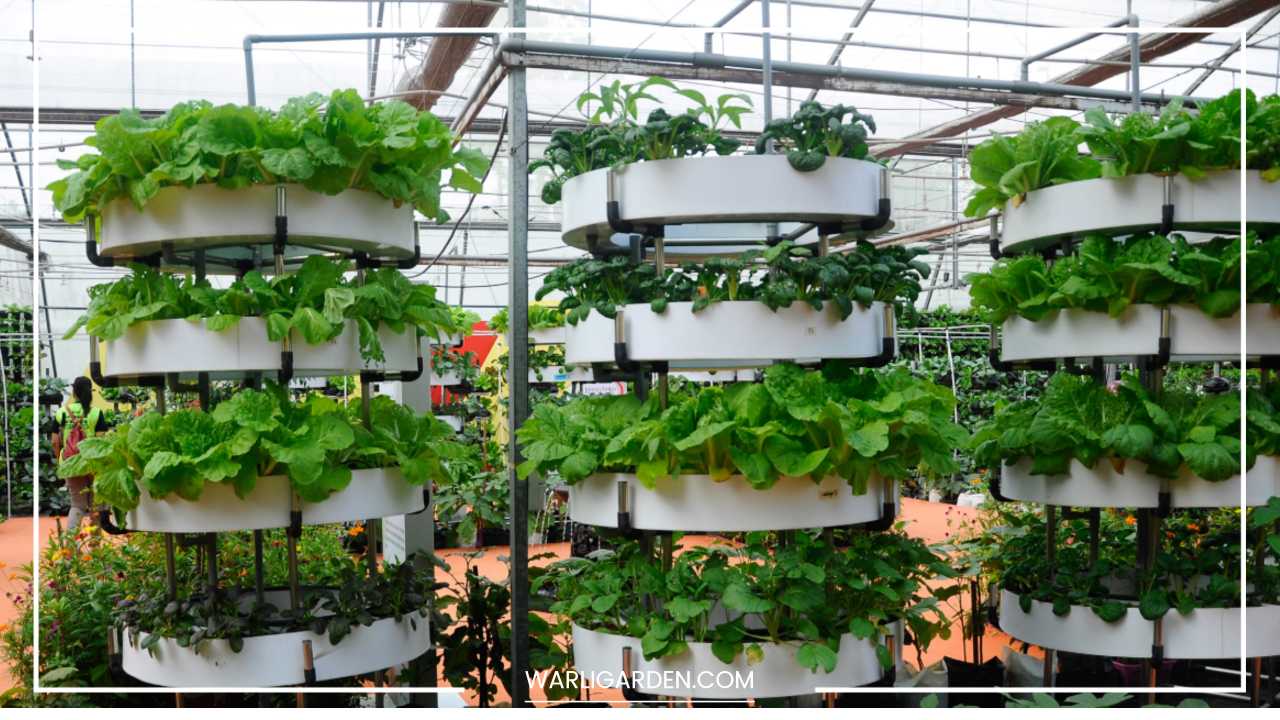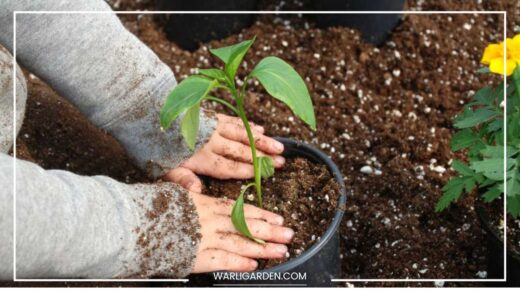What is Vertical Farming?

Vertical Farming
The Rising Trend: A Look at Vertical Farming
Traditionally, agriculture has relied on sprawling fields bathed in sunlight and watered by rain. But as populations balloon and arable land shrinks, a new approach is taking root: vertical farming.
This innovative method utilizes vertically stacked layers to cultivate crops in a controlled indoor environment.
A Greener Future Taking Root in India
India, with its vast population and limited land resources, presents a prime opportunity for vertical farming to flourish.
The government has recognized this potential, launching initiatives to promote research and development in this field. Several pilot projects are already underway, with some companies even establishing commercial vertical farms.
These initial ventures are focusing on leafy greens and herbs, crops that thrive in controlled environments and have a high demand in urban centers.
As the technology matures and costs decrease, vertical farming has the potential to revolutionize India’s agricultural landscape, contributing to food security and creating new job opportunities.
Stacking Success: Types of Vertical Farming
There’s no one-size-fits-all approach to vertical farming. Different techniques cater to specific crops and growing conditions. Here’s a breakdown of the most common types:
- Hydroponics: This method eliminates soil altogether, suspending plant roots in a nutrient-rich water solution.
- Aeroponics: A step beyond hydroponics, aeroponics mists plant roots with a fine spray of nutrient solution, maximizing oxygen availability for faster growth.
- Aquaponics: This symbiotic system combines fish farming with hydroponics. Fish waste provides natural nutrients for plants, while the plants filter water for the fish.
Each type has its advantages and considerations. Hydroponics is the most widely used due to its simplicity and scalability. Aeroponics offers faster growth but requires more precise environmental control. Aquaponics creates a closed-loop system, minimizing waste and water usage, but requires expertise in managing both plant and fish life.
Reaping the Rewards: Advantages of Vertical Farming
Vertical farming boasts a multitude of advantages over traditional agriculture:
- Increased Yield: By stacking growing layers, vertical farms can produce significantly higher yields on a smaller footprint. This is particularly beneficial in urban areas with limited space.
- Reduced Water Usage: Vertical farms employ closed-loop systems that recapture and reuse water, minimizing waste. This is crucial in regions facing water scarcity.
- Year-Round Production: Controlled environments shield crops from seasonal variations, allowing for year-round production regardless of weather conditions.
- Pesticide-Free Farming: Indoor environments minimize the need for pesticides, resulting in cleaner produce.
- Reduced Food Waste: Vertical farms typically have shorter transportation distances, leading to fresher produce and less spoilage.
- Sustainable Practices: Reduced water usage, minimized pesticide application, and efficient resource management make vertical farming a more sustainable agricultural method.
These advantages hold immense promise for the future of food production, particularly in a world grappling with climate change and resource depletion.
Building a Vertical Oasis: Essential Equipment
While the concept seems futuristic, the equipment needed for vertical farming is often surprisingly simple:
- Growing Racks: These multi-tiered structures provide the base for stacking plants.
- Lighting Systems: Artificial lights, often LEDs, simulate sunlight and ensure optimal growth conditions.
- Climate Control Systems: Temperature, humidity, and ventilation are meticulously controlled to create the perfect environment for specific crops.
- Nutrient Delivery Systems: Depending on the chosen method (hydroponics, aeroponics etc.), automated systems deliver essential nutrients to the plants.
- Monitoring and Automation Systems: Sensors and software constantly monitor and adjust environmental parameters, ensuring optimal growing conditions.
The specific equipment needed will vary depending on the scale and type of vertical farm. However, these core elements provide the foundation for a successful vertical farming operation.
Growing Green Indoors: Vertical Farming at Home
The concept of vertical farming isn’t limited to large-scale operations. Even home gardeners can embrace this approach. Here’s how:
- Vertical Planters: These wall-mounted or freestanding structures allow for growing herbs, lettuce, and other leafy greens in a compact space.
- Hydroponic Kits: Small-scale hydroponic kits provide a controlled environment for growing a limited number of plants indoors.
- Window Farms: Utilize sunny windowsills for vertical gardening with simple DIY setups using recycled materials.
While home-based vertical farms won’t replace grocery stores, they offer a fun and educational way to cultivate fresh produce year-round, even in apartments with limited space.
Branching Out: Hydroponic Vertical Farming
Hydroponics is the most common method used in vertical farming due to its simplicity and scalability. Here’s a closer look at how it works:
In a hydroponic vertical farm, plants are strategically placed in containers or channels within a vertical structure.
These containers don’t contain soil; instead, they hold an inert medium like rockwool or coco coir that provides support for the plant roots. This inert medium allows for efficient water flow and oxygen delivery, both crucial for healthy plant growth.
The key to hydroponics lies in the nutrient solution. This carefully formulated solution, containing essential minerals and elements dissolved in water, provides all the nutrients plants need to thrive. The delivery of this nutrient solution can be achieved through various methods:
- Nutrient Film Technique (NFT): A thin film of nutrient solution continuously flows past the plant roots using a pump and channels. This method ensures constant access to water and nutrients for rapid growth.
- Deep Water Culture (DWC): Plant roots are suspended in a continuously aerated reservoir of nutrient solution. This method is simple to set up but requires careful monitoring of oxygen levels to prevent root rot.
- Ebb and Flow (Flood and Drain): Grow trays filled with the inert medium are periodically flooded with nutrient solution, then allowed to drain completely. This method provides both hydration and oxygenation for the roots, promoting healthy growth.
By precisely controlling the nutrient solution’s composition and delivery method, hydroponic vertical farms can optimize plant growth for specific crops and yields.
This level of control also minimizes the risk of nutrient deficiencies and diseases that can plague traditional soil-based agriculture.
Hydroponic Vertical Farming: A Deep Dive
In hydroponic vertical farming, plants are suspended in a nutrient-rich water solution instead of being grown in soil. This method offers several advantages:
- Precise Control: Nutrient delivery can be meticulously controlled, ensuring plants receive exactly what they need for optimal growth.
- Reduced Disease Risk: Eliminating soil minimizes the risk of soil-borne diseases, leading to healthier crops.
- Efficient Water Usage: Hydroponic systems capture and reuse water, reducing overall water consumption.
- Faster Growth Rates: Plants can access nutrients more readily in water compared to soil, often leading to faster growth cycles.
There are several sub-methods within hydroponics used in vertical farms:
- Nutrient Film Technique (NFT): A thin film of nutrient solution continuously flows past plant roots, providing constant access to water and nutrients.
- Deep Water Culture (DWC): Plant roots are suspended in a continuously aerated reservoir of nutrient solution.
- Ebb and Flow (Flood and Drain): Grow trays are flooded with nutrient solution periodically, then allowed to drain, ensuring both hydration and oxygenation for the roots.
The choice of sub-method depends on factors like crop type, desired yield, and available resources.
The Future Takes Root: Glimpsing Advancements in Vertical Farming
Vertical farming is a rapidly evolving field with continuous innovation pushing the boundaries of what’s possible. Here are some exciting advancements on the horizon:
- Automation and Robotics: Increased automation and robotics will streamline tasks like planting, harvesting, and environmental monitoring, making vertical farming even more efficient.
- Integration of Artificial Intelligence (AI): AI can analyze data on plant growth, environmental conditions, and resource usage to further optimize growing conditions and maximize yields.
- Multi-Level Integration: Vertical farms may integrate with other sustainable technologies like solar panels on rooftops or aquaponics systems for waste reduction.
- Urban Integration: Vertical farms could be built into urban infrastructure, like rooftops or abandoned buildings, minimizing transportation costs and promoting local food production.
These advancements hold the potential to make vertical farming even more efficient, sustainable, and cost-effective, paving the way for wider adoption across the globe.
A Vertical Revolution
Vertical farming offers a compelling solution for a world facing growing populations, limited land resources, and a changing climate.
With its high yields, minimal environmental impact, and potential for local food production, vertical farming has the potential to revolutionize agriculture.
As the technology matures and costs decrease, vertical farms could become a mainstay in our food production systems, ensuring a more secure and sustainable future for generations to come.
The Road Ahead: Challenges and Considerations for Vertical Farming in India
While the potential of vertical farming in India is undeniable, there are challenges that need to be addressed for widespread adoption:
- High Initial Investment: Setting up a vertical farm requires significant upfront costs for infrastructure, equipment, and technology. Government subsidies and private investments are crucial to make this technology more accessible.
- Energy Consumption: Artificial lighting is a major energy consumer in vertical farms. Integrating renewable energy sources like solar panels or wind power will be essential for sustainable operation.
- Skilled Workforce: Vertical farming requires a workforce with expertise in areas like hydroponics, automation, and data analysis. Investing in education and training programs will be critical to develop this specialized workforce.
- Consumer Awareness: While the concept of vertical farming is gaining traction, consumer awareness about its benefits remains limited. Educating consumers about the advantages of vertical farming, such as its sustainability and reduced food waste, will be crucial for market acceptance.
- Regulation and Policy: Currently, there’s a lack of specific regulations for vertical farming in India. Establishing clear guidelines for areas like water usage, nutrient management, and food safety will be vital for ensuring the responsible and sustainable growth of this industry.
Addressing these challenges will require collaboration between the government, private sector, research institutions, and educational bodies.
By working together, India can harness the immense potential of vertical farming to ensure food security, promote sustainable practices, and create new economic opportunities.
A Sustainable Future: The Ripple Effect of Vertical Farming
The impact of vertical farming extends beyond just growing food. Here’s a glimpse into the broader positive effects:
- Reduced Environmental Impact: By minimizing water usage, eliminating pesticide use, and potentially integrating renewable energy sources, vertical farming contributes to a more sustainable food system.
- Urban Renewal: Vertical farms can be established in unused urban spaces, revitalizing abandoned buildings and promoting urban agriculture.
- Job Creation: The vertical farming industry has the potential to create new jobs in areas like farm management, engineering, data analysis, and logistics.
- Shorter Supply Chains: Locally produced food in vertical farms can shorten supply chains, reducing transportation costs and environmental impact.
- Improved Food Security: Vertical farming can provide a reliable source of fresh produce in areas with limited arable land or harsh climates, contributing to food security.
The ripple effects of vertical farming extend far beyond the walls of the farm itself, contributing to a more sustainable, resilient, and food-secure future.
Final Thoughts: A Seed of Change
Vertical farming is not just a new technology; it’s a paradigm shift in how we approach food production. By harnessing innovation and addressing existing challenges, India can position itself as a leader in this transformative field.
As vertical farms take root across the country, they have the potential to not only revolutionize agriculture but also contribute to a more sustainable and secure food system for generations to come.


